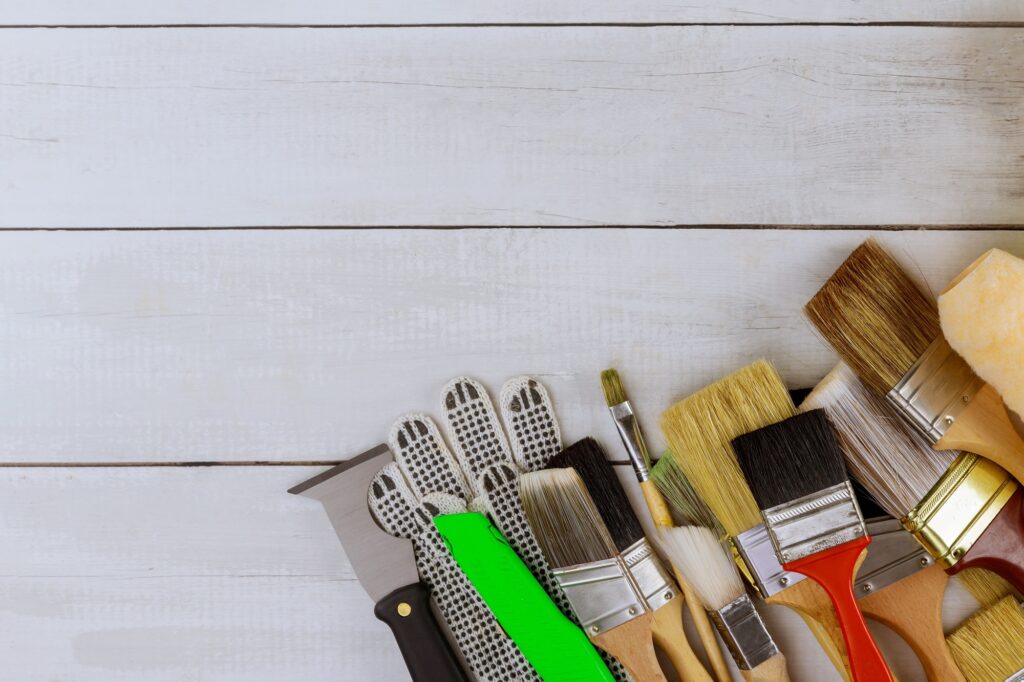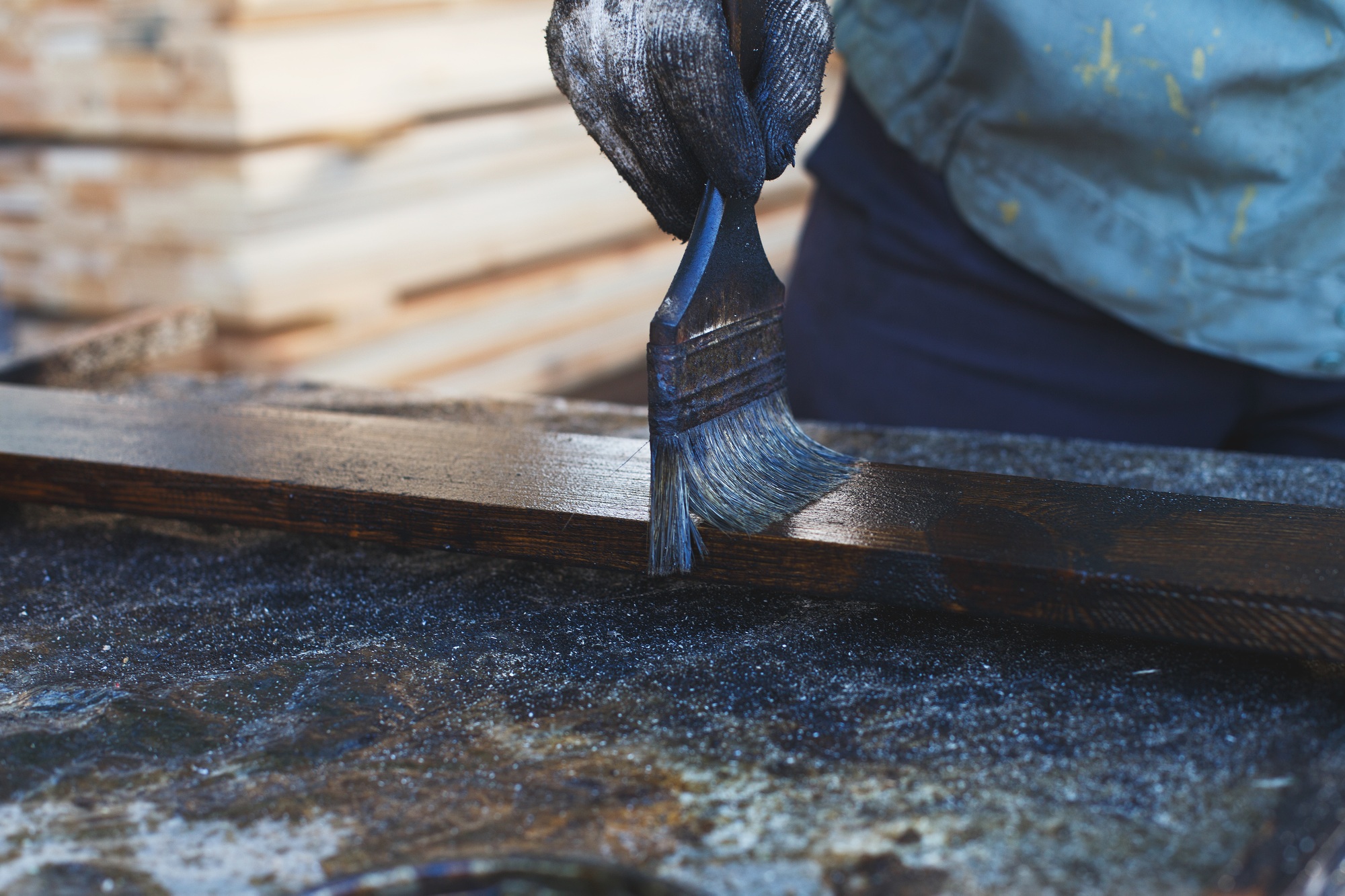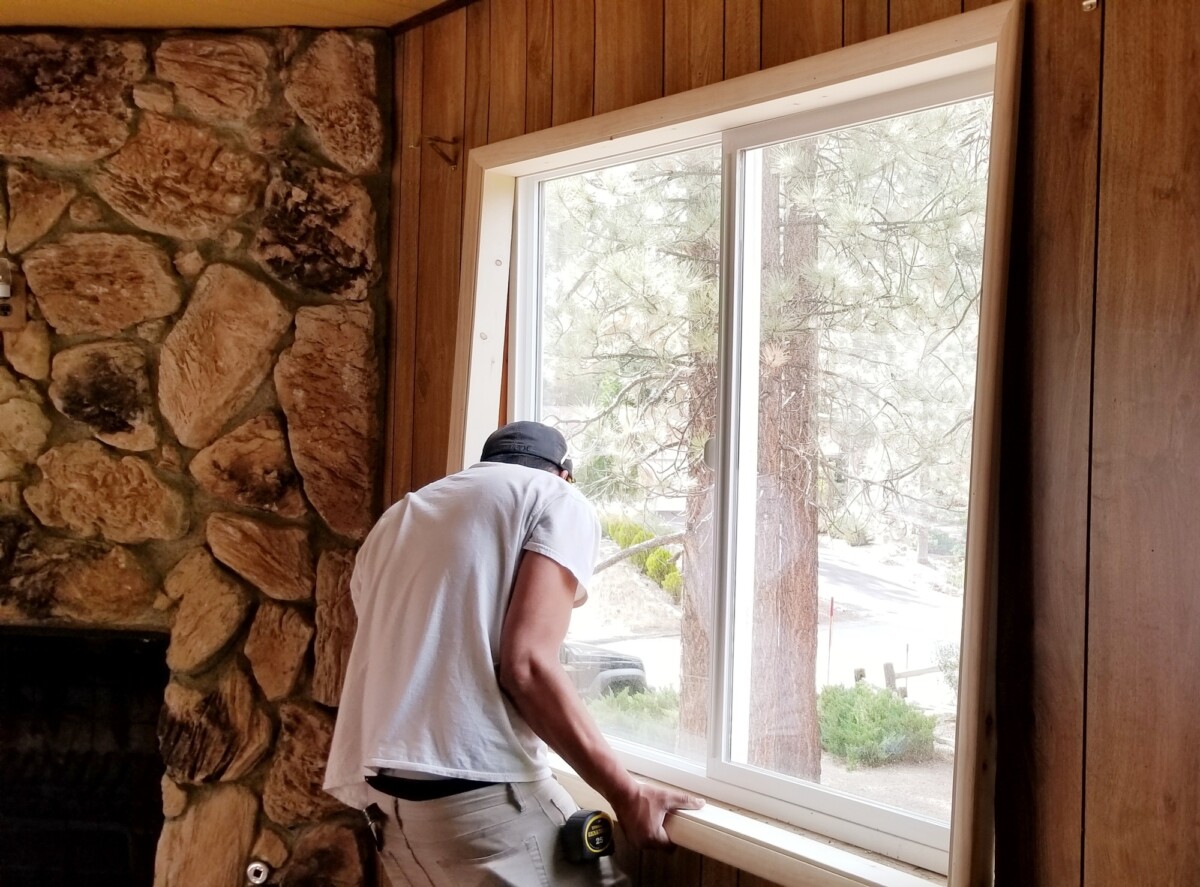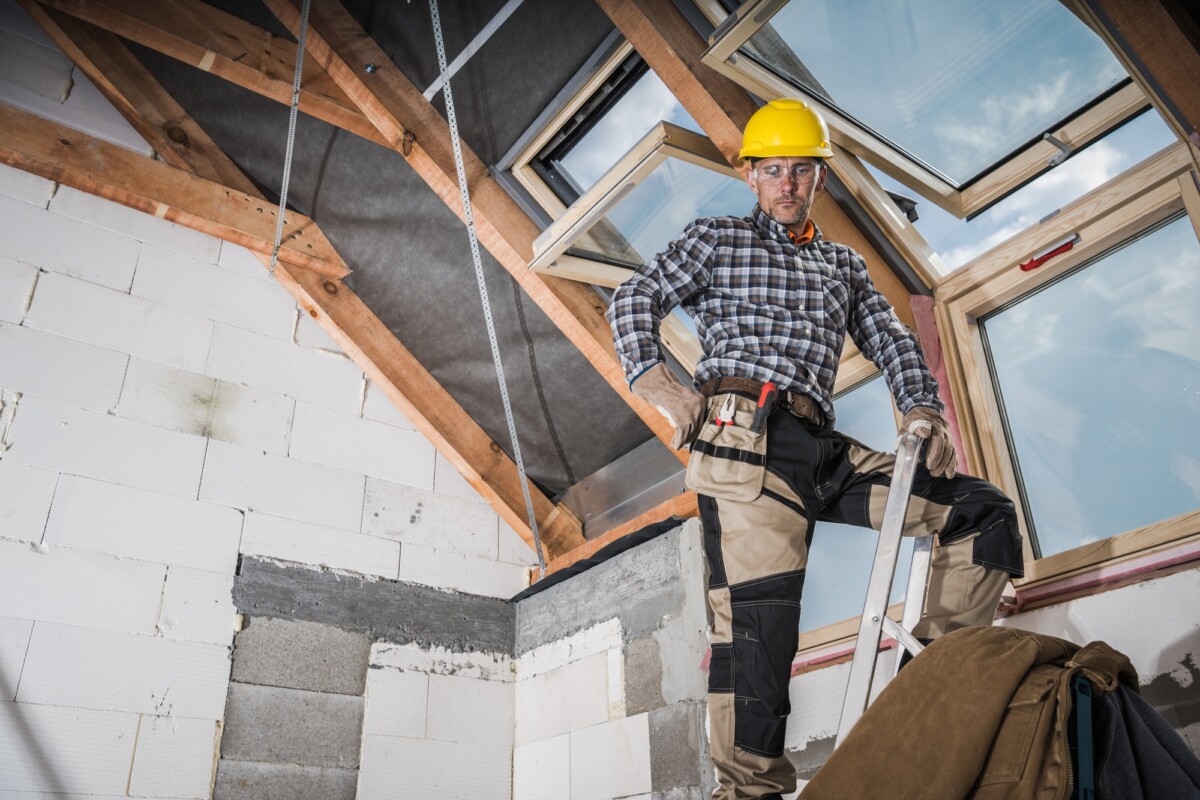Post-Storm Makeover: Exterior Painting After Weather Damage in Lake Charles
When a storm passes, your home’s exterior often bears the brunt of the elements, especially in regions like Lake Charles where extreme weather events are a common occurrence. From high winds to heavy rain, the aftermath can leave your home looking worse for wear. Repainting your home is not only an opportunity to restore its visual appeal but also a chance to reinforce its defenses against future damage. However, before you start the painting process, it’s essential to thoroughly assess the existing damage. Proper evaluation ensures that your painting project addresses any underlying problems, creating a finish that lasts and protects your home for years to come.
Want a Home That Stands Out in the Neighborhood? Contact Us for Expert Painting Today!
1. Inspect for Cracks and Peeling: Start With the Basics
The first step in assessing your home’s weather damage is to examine the exterior walls closely. Look for visible signs of wear and tear that might compromise the success of your repainting project.
Cracks
Cracks can range from small hairline fractures to larger splits along the seams, edges, or corners of your exterior walls. These often result from the stress of strong winds, temperature fluctuations, or moisture infiltration.
- Impact: Even minor cracks can allow water to seep in, which may lead to structural damage, rot, or mold over time.
- Next Steps: Small cracks can be patched and sealed, but larger ones may require professional attention to prevent recurring issues.
Peeling Paint
Peeling or bubbling paint often indicates a deeper issue, such as moisture trapped beneath the surface.
- Impact: Left unaddressed, peeling paint can spread, exposing your home’s exterior to the elements and reducing the effectiveness of future paint layers.
- Next Steps: Remove peeling paint completely before applying a fresh coat, ensuring the surface is clean and dry.
💡 Pro Tip: If widespread peeling or large cracks are present, consult a professional contractor to evaluate the extent of the damage. Addressing the root cause is crucial for a long-lasting paint job.
2. Evaluate the Roof and Gutters: Look Up for Hidden Problems
The roof and gutters are often overlooked during post-storm inspections, but they play a critical role in protecting your home’s exterior.
Roof
Inspect your roof for signs of damage such as missing or lifted shingles, visible leaks, or debris accumulation.
- Impact: A damaged roof can allow water to infiltrate your home, leading to issues like damp walls, rot, and peeling paint on your siding.
- Next Steps: Replace missing shingles or repair leaks promptly to prevent further damage to your home’s structure and exterior finish.
Gutters
Storm debris often clogs gutters, causing water to overflow and pool around your home’s foundation or siding.
- Impact: Poor drainage can lead to water stains, mold growth, and damage to your exterior paint.
- Next Steps: Clean gutters thoroughly and ensure they are securely attached and properly draining water away from your home.
💡 Pro Tip: Schedule regular roof and gutter maintenance after storms to keep your home’s exterior in good condition and prevent costly repairs in the future.
3. Identify Mold and Mildew: A Common Post-Storm Nuisance
In humid areas like Lake Charles, mold and mildew thrive in the aftermath of heavy storms. These unsightly and potentially harmful growths can develop on your walls, eaves, or shaded areas.
Spotting Mold
Look for black, green, or white patches on the surface of your home’s exterior, particularly in areas that stay damp after a storm.
- Impact: Mold not only diminishes your home’s appearance but can also compromise the integrity of your paint and pose health risks.
- Next Steps: For small areas, use a bleach-and-water solution to clean the affected surfaces. For larger infestations, consult a mold remediation specialist.
💡 Pro Tip: Before repainting, apply a mold-resistant primer to help prevent future growth and protect your new paint job.

paint
4. Document the Damage: Keep a Detailed Record
Thorough documentation is an essential step, whether you plan to work with contractors, file an insurance claim, or simply track the progress of your repainting project.
Photographs
Take clear, detailed photos of all affected areas, including cracks, peeling paint, roof damage, and mold growth.
- Impact: Visual evidence is invaluable for insurance claims or when consulting contractors for estimates.
- Next Steps: Organize your photos by area for easy reference.
Notes
Write down specific observations, such as the location and severity of each issue.
- Impact: A detailed written record ensures nothing is overlooked and provides contractors with the information they need to provide accurate quotes.
💡 Pro Tip: Keep your documentation organized and ready to share with insurance adjusters or contractors during inspections.
5. Consider the Weather: Timing is Everything
Weather conditions can significantly impact the success of your painting project.
Ideal Conditions
Choose a period of dry, mild weather for your exterior painting.
- Impact: Temperatures between 50°F and 85°F with low humidity are optimal for paint adhesion and drying.
- Next Steps: Plan your project for early spring or fall, when weather conditions are generally favorable in Lake Charles.
Seasonal Planning
Avoid painting immediately after a storm or during periods of high humidity. Moisture can interfere with the paint’s ability to bond to the surface and lead to bubbling or peeling.
💡 Pro Tip: Monitor weather forecasts closely and schedule your painting project accordingly to ensure the best results.
Don’t Settle for Dull – Let Us Bring Your Home Back to Life! Call Now!
6. Consult with Professionals: Don’t Go It Alone
While some aspects of assessing weather damage can be handled by homeowners, complex issues or significant damage often require professional expertise.
Inspection Services
Hire a professional to identify structural damage, hidden moisture problems, or other issues that might not be immediately visible.
- Impact: A professional assessment can save you time and money by ensuring all issues are addressed before repainting.
- Next Steps: Look for contractors with experience in storm damage repair and exterior painting.
Multiple Quotes
Get estimates from several contractors to compare pricing and services.
- Impact: Comparing quotes helps ensure you get the best quality work at a fair price.
- Next Steps: Ask for references and verify credentials before hiring.
💡 Pro Tip: Choose a contractor familiar with Lake Charles’ weather conditions to ensure your home is equipped to handle future storms.
ssessing weather damage is not just a preliminary step—it’s the foundation of a successful repainting project. By carefully inspecting your home’s exterior for cracks, peeling paint, mold, and other signs of wear, you can address underlying issues that might compromise your painting efforts. This approach ensures a smooth, long-lasting finish that enhances your home’s appearance and protects it from future weather events.
For residents of Lake Charles, where storms and high humidity are common, investing time in a thorough damage assessment can save you from costly repairs down the road. Documenting the damage, inspecting your roof and gutters, and consulting with professionals will help you create a targeted plan that guarantees excellent results.
At the end of the process, your home will not only look stunning but also stand resilient against future storms. Whether you’re planning a simple refresh or a complete exterior transformation, the steps you take now will define the success of your project.
Don’t leave your home’s exterior to chance—partner with experts who understand the unique challenges of Lake Charles weather and can deliver results that last.
FAQs: Your Questions About Weather Damage and Repainting Answered
1. How do I know if my home needs repainting after a storm?
Look for visible signs such as peeling or bubbling paint, cracks, discoloration, or mold growth. These are indicators that your exterior may need attention. Consulting with a professional inspector can help you determine the extent of the damage.
2. Can I paint over peeling or cracked paint?
No, painting over damaged surfaces will not yield a lasting result. You’ll need to scrape off the peeling paint and repair any cracks before applying a new coat.
3. How soon after a storm can I start repainting?
It’s essential to wait until the surface is dry and free from moisture. Depending on weather conditions, this may take a few days. Ensure the forecast predicts dry, mild weather for optimal painting conditions.
4. Do I need to clean my exterior before repainting?
Yes, cleaning is crucial. Dirt, mold, and mildew can interfere with paint adhesion. Use a pressure washer or scrub with a bleach-and-water solution for areas with mold or mildew.
5. Should I hire professionals for storm-damage repainting?
While you can handle minor projects yourself, professional painters bring expertise, high-quality materials, and tools to ensure a durable, polished finish. They can also identify and address hidden issues.
6. What type of paint is best for Lake Charles’ climate?
For Lake Charles, choose paints with UV resistance, moisture-repellent properties, and durability against temperature fluctuations. Semi-gloss and satin finishes are popular for their balance of aesthetics and protection.
7. Can I file an insurance claim for storm damage affecting my home’s exterior?
Yes, if the damage is significant, your homeowner’s insurance may cover repairs. Document the damage with photos and contact your insurer to understand your coverage.





